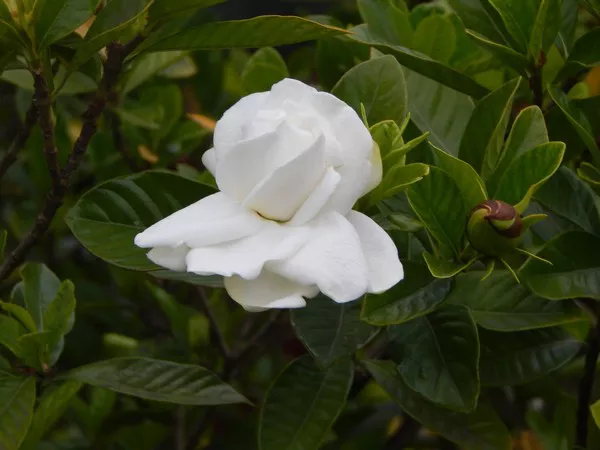Hibiscus flowers, known for their vibrant colors and striking appearance, are not only a feast for the eyes but also a source of curiosity for food enthusiasts. While these flowers are commonly used for ornamental purposes and in herbal teas, there is a growing interest in their culinary potential. In this comprehensive article, we will delve into the question of whether humans can eat hibiscus flowers and explore the various ways they can be incorporated into culinary delights.
The Edible Varieties of Hibiscus Flowers
Before we discuss their edibility, it’s important to differentiate between the many species of hibiscus. While not all hibiscus varieties are suitable for consumption, there are certain species specifically cultivated for culinary purposes. The two most common types of edible hibiscus flowers are Hibiscus sabdariffa and Hibiscus rosa-sinensis.
1. Hibiscus sabdariffa: The Edible Roselle
Hibiscus sabdariffa, commonly known as roselle or sorrel, is a variety of hibiscus cultivated for its calyces and sepals, which are used in a variety of culinary applications. The calyces are typically red and have a tart, cranberry-like flavor. They are the primary part of the plant used in cooking.
Culinary Uses of Hibiscus sabdariffa
Sorrel Tea: The calyces of Hibiscus sabdariffa are used to make a tangy, crimson-colored tea known as “sorrel tea.” It is popular in various cultures and often enjoyed sweetened with sugar or honey.
Jams and Preserves: Hibiscus sabdariffa can be used to make jams, jellies, and preserves, adding a unique flavor and vibrant color.
Sauces and Marinades: The tartness of roselle makes it a suitable ingredient for sauces, marinades, and salad dressings, adding a delightful zing.
Beverages: Beyond tea, roselle can be used to create refreshing beverages like hibiscus lemonade or cocktails.
Hibiscus rosa-sinensis: Caution
While Hibiscus rosa-sinensis, also known as the tropical hibiscus, is renowned for its showy, ornamental flowers, it is not generally considered safe for consumption. Unlike Hibiscus sabdariffa, the tropical hibiscus contains compounds that can be harmful when ingested in large quantities. Therefore, it is advisable to avoid using Hibiscus rosa-sinensis in culinary endeavors.
2. Nutritional Benefits of Hibiscus Flowers
Hibiscus flowers, particularly Hibiscus sabdariffa, offer a range of potential health benefits when consumed in moderation:
Rich in Antioxidants: Hibiscus flowers are packed with antioxidants, including vitamin C and anthocyanins, which help combat oxidative stress and inflammation in the body.
Heart Health: Some studies suggest that hibiscus tea may help lower blood pressure and cholesterol levels, potentially reducing the risk of heart disease.
Digestive Aid: Hibiscus tea is known to have mild diuretic properties and may aid in digestion by promoting a healthy gut.
Weight Management: The natural tartness of hibiscus tea can deter excessive sugar consumption, making it a useful beverage for weight management.
3. Cautions and Considerations of Eating Hibiscus Flowers
While hibiscus flowers offer numerous benefits, there are some cautions to be aware of:
Pesticides: Ensure that any hibiscus flowers or products you consume are free from harmful pesticides or contaminants. Organic or trusted sources are recommended.
Interactions with Medications: Hibiscus tea may interact with certain medications, such as antihypertensives and diuretics. Consult with a healthcare professional if you have concerns about potential interactions.
Pregnancy and Lactation: Pregnant or nursing women should consume hibiscus tea in moderation, as excessive consumption may have adverse effects.
Allergies: Some individuals may be allergic to hibiscus flowers. If you experience any allergic reactions, discontinue use immediately.
4. Preparing Hibiscus Flowers for Consumption
If you decide to incorporate hibiscus flowers into your culinary adventures, here are some basic steps for preparing them:
Harvesting: If you are growing your own Hibiscus sabdariffa, harvest the calyces when they are fully mature and vibrant red. Remove any green parts, as they can be bitter.
Cleaning: Rinse the harvested calyces thoroughly under running water to remove any dirt or debris.
Drying: To extend their shelf life, you can air-dry the calyces in a well-ventilated area or use a food dehydrator. Once dried, they can be stored in an airtight container.
Infusion: To make hibiscus tea, steep the dried calyces in hot water for 5-10 minutes. Sweeten to taste with sugar, honey, or other natural sweeteners.
Cooking: For other culinary uses, such as sauces or jams, follow specific recipes that call for dried hibiscus calyces.
Conclusion
In summary, the edibility of hibiscus flowers depends on the specific variety you are considering. Hibiscus sabdariffa, commonly known as roselle, offers a wide range of culinary possibilities and potential health benefits when consumed in moderation. On the other hand, Hibiscus rosa-sinensis, the tropical hibiscus, is best admired for its ornamental beauty and is not generally considered safe for consumption due to potentially harmful compounds.
When exploring the culinary world of hibiscus flowers, always exercise caution, ensure the quality of your sources, and consult with healthcare professionals if you have specific health concerns or medication interactions. By following these guidelines and savoring the unique flavors and benefits of Hibiscus sabdariffa, you can enjoy the delightful versatility of these vibrant blooms in your culinary endeavors.


